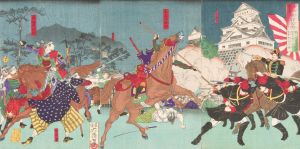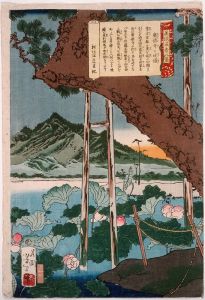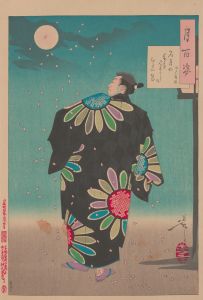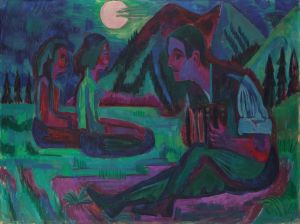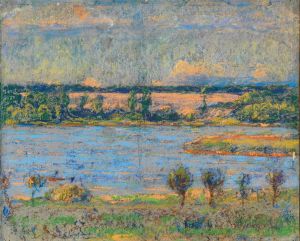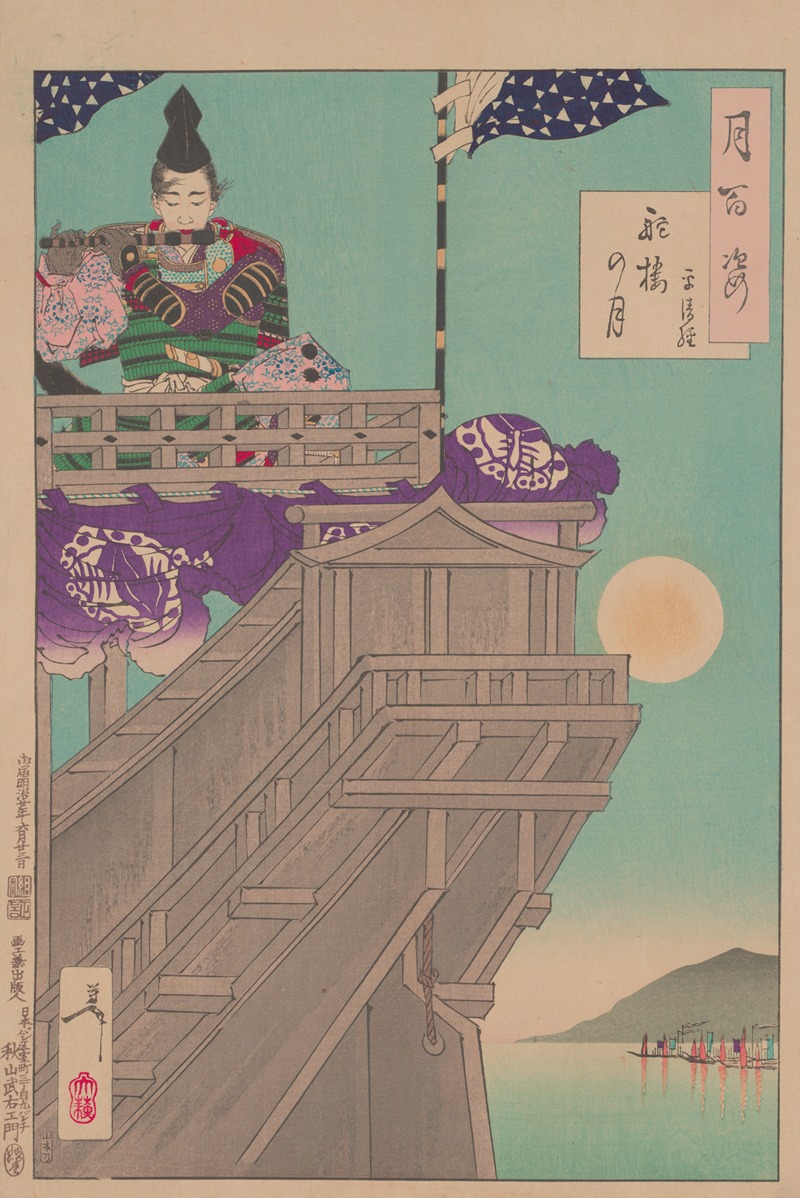
The Moon and the helm of a boat
A hand-painted replica of Tsukioka Yoshitoshi’s masterpiece The Moon and the helm of a boat, meticulously crafted by professional artists to capture the true essence of the original. Each piece is created with museum-quality canvas and rare mineral pigments, carefully painted by experienced artists with delicate brushstrokes and rich, layered colors to perfectly recreate the texture of the original artwork. Unlike machine-printed reproductions, this hand-painted version brings the painting to life, infused with the artist’s emotions and skill in every stroke. Whether for personal collection or home decoration, it instantly elevates the artistic atmosphere of any space.
Tsukioka Yoshitoshi (1839–1892) was a renowned Japanese artist known for his contributions to the ukiyo-e genre, a style of woodblock printing and painting that flourished in Japan from the 17th through the 19th centuries. Yoshitoshi is often celebrated for his innovative approach to traditional subjects and his ability to capture the complexities of human emotion and the supernatural in his work. One of his notable works is "The Moon and the Helm of a Boat," which is part of his famous series "One Hundred Aspects of the Moon" (Tsuki hyakushi).
"The Moon and the Helm of a Boat" is a woodblock print that exemplifies Yoshitoshi's mastery in combining traditional Japanese themes with a unique artistic vision. This particular print is part of the "One Hundred Aspects of the Moon" series, which was completed between 1885 and 1892. The series is considered one of Yoshitoshi's masterpieces and reflects his deep interest in the moon as a symbol of beauty, mystery, and the passage of time.
In "The Moon and the Helm of a Boat," Yoshitoshi depicts a scene that is both serene and evocative. The composition typically features a lone figure, often a samurai or a historical figure, in a contemplative pose, gazing at the moon. The helm of the boat suggests a journey, both literal and metaphorical, as the figure navigates through life’s challenges and uncertainties. The moon, a recurring motif in Yoshitoshi's work, serves as a silent witness to the scene, its light casting a gentle glow over the water and the figure.
Yoshitoshi's use of color and line in this print is particularly noteworthy. He employs a subtle palette that enhances the mood of tranquility and introspection. The delicate gradations of color in the sky and water create a sense of depth and movement, while the precise lines of the boat and figure add a sense of structure and balance to the composition. This attention to detail and the harmonious integration of elements are characteristic of Yoshitoshi's style and contribute to the enduring appeal of his work.
The "One Hundred Aspects of the Moon" series, including "The Moon and the Helm of a Boat," reflects Yoshitoshi's fascination with the moon as a symbol in Japanese culture. The moon is often associated with poetic beauty, the passage of time, and the transient nature of life. Through this series, Yoshitoshi explores these themes, drawing on historical and literary references to create images that resonate with viewers on multiple levels.
Yoshitoshi's work, including "The Moon and the Helm of a Boat," has been influential in both Japan and the West. His ability to blend traditional Japanese aesthetics with a modern sensibility has earned him a lasting legacy as one of the last great masters of ukiyo-e. His prints continue to be celebrated for their artistic merit and their ability to capture the essence of the human experience.
In summary, "The Moon and the Helm of a Boat" by Tsukioka Yoshitoshi is a significant work within the "One Hundred Aspects of the Moon" series. It exemplifies Yoshitoshi's skill in combining traditional themes with a unique artistic vision, creating a work that is both beautiful and thought-provoking. Through his use of color, composition, and symbolism, Yoshitoshi invites viewers to reflect on the themes of journey, introspection, and the passage of time.






